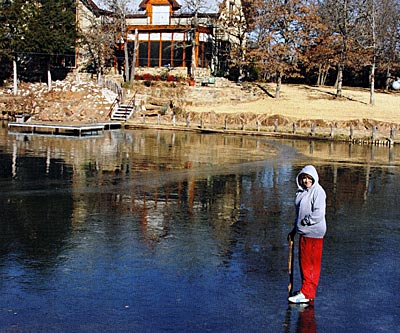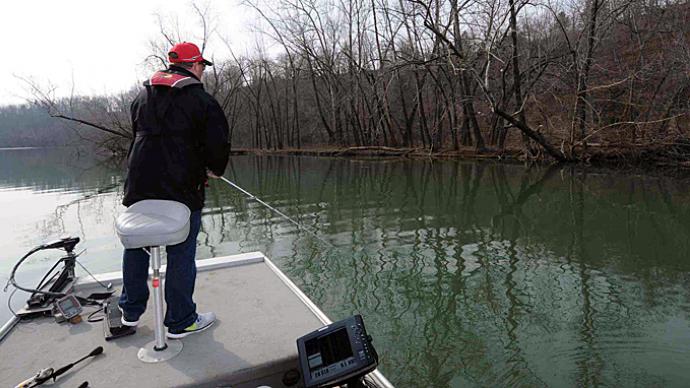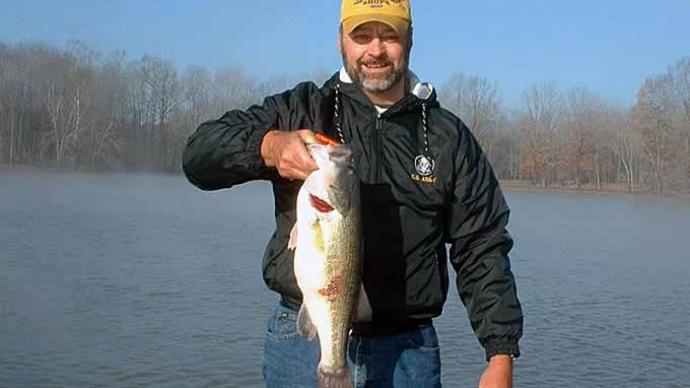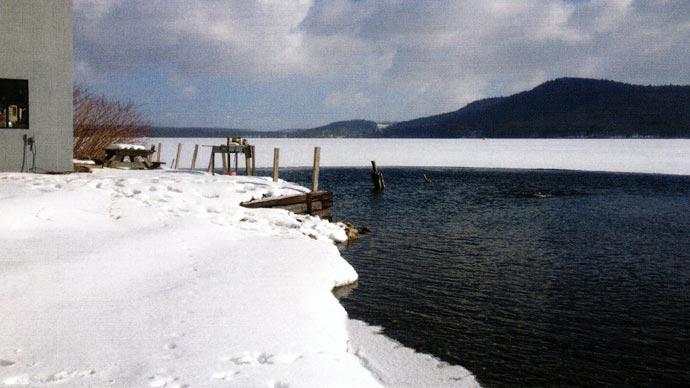
This time of year, as ice is forming or thickening on our northern ponds, we look forward to time spent on the ice, catching fish we've nurtured for years, the chance to skate, or just enjoy winter sports. Our ponds play a big part of that fun.
Did you winterize your favorite winter water land?
Of course, where ice is big, people remove their docks, or make sure their circulators are keeping hard water away.
But, what else have you done to ensure your pond is vibrant and healthy at ice off? After all, winter can take a mighty toll on your pond, if it isn't prepared for cold times.
During the rest of the year, as you work or piddle around the pond, you'll see things that need to be done that are not necessarily scheduled. Give that some thought.
Remember the risk of winterkill rises as our ponds age. Eutrophication (the big word for age) means added nutrients and silt, more aquatic plants, or plankton and algae. With more nutrients comes a bigger oxygen demand. Under ice, photosynthesis diminishes and water doesn't contact the atmosphere, which means there's a finite amount of oxygen.
Before ice up, it's a good idea to remove any limbs and branches that have made their way into a pond, be they deposited by storms, natural sloughing, or nature's woodworkers, beavers. Rake excessive leaves. When your deciduous trees shed, the leaves flutter to the pond, and fall breezes push them toward shore. As they pile, leaves become waterlogged and sink in place. You can rake those leaves from under the water with a garden rake, or one of any pond weed rakes. If you leave this organic litter, your water will attempt to break that matter down into its basics, which means valuable oxygen will be consumed by decomposing plants. If there's ice, expect your underwater compost pile to suck way more oxygen from your water than it produces. Combine that with living aquatic plants that live under a shadow of ice cover, and expect to see dead fish at ice out. Plan to rake leaves and collect limbs before ice over.
What about regular maintenance things? Clean mats of brush from around your pond's discharge pipe, and rake weeds off the spillway. Fill erosion lanes on the shoreline with good soils. You know the ones—those created during heavy spring rains, places where geese habitually caused walking lanes, or where beavers and other furry critters create their slides.

Speaking of furbearers, do regular walkabouts around your pond, looking for clues of furry predators. Otters feast on slow moving fish during winter. Beavers work hard, cutting or girdling your trees. Look for sign.
Look over your dam and make sure you have no vines, brush, or small trees on either side. Trees growing on any part of a dam will be a headache in the future. Late fall and winter is a great time to put a stop to excess terrestrial growth. Chainsaws are handy for this chore.
If cattail catkins (seed pods) haven't erupted cut them off and burn them—better yet, pass them on to a crafty friend for use in a decorative dried flower arrangement. If catkins erupt as you cut, put a plastic bag over them, and then cut. The objective is to prevent the spread of their seeds so you don't get those plants all around.
As the water cools, be on the lookout for algae or other aquatic plants. You may need to eradicate or remove those plants to decrease oxygen demand.
Pay close attention to your equipment. Winterize your aeration system according to manufacturer recommendations. If you have fish feeders, let them run empty, or cut them back. Make sure batteries are charged.
We know that not every pondmeister has ice cover.. .when we look at the Mason-Dixon Line and points south, over the Atlantic Seaboard, into northern Virginia, many ponds don't have thick ice cover. Lots of those ponds have skims of ice, or maybe a few inches that don't last as long it does on northern ponds. For you folks, winterizing means something a little bit different. You may be dealing with algae in February, or local flocks of non-migratory geese. Where geese congregate on or around water, expect their waste to influence your pond. Encourage local populations to leave.
Here's your bottom line. There are things to do before and during winter to make life better when the days grow longer this spring. Think about your pond from that context. Ask yourself, "What can I do to improve and take care of my pond this time of year?" As you ponder that question, you might be surprised at the different thoughts that pop through your mind.
Even though nature sleeps all winter, that doesn't mean we can forget about some of the important parts of pond maintenance. Come spring, your pond will thank you.
Reprinted with permission from Pond Boss Magazine



